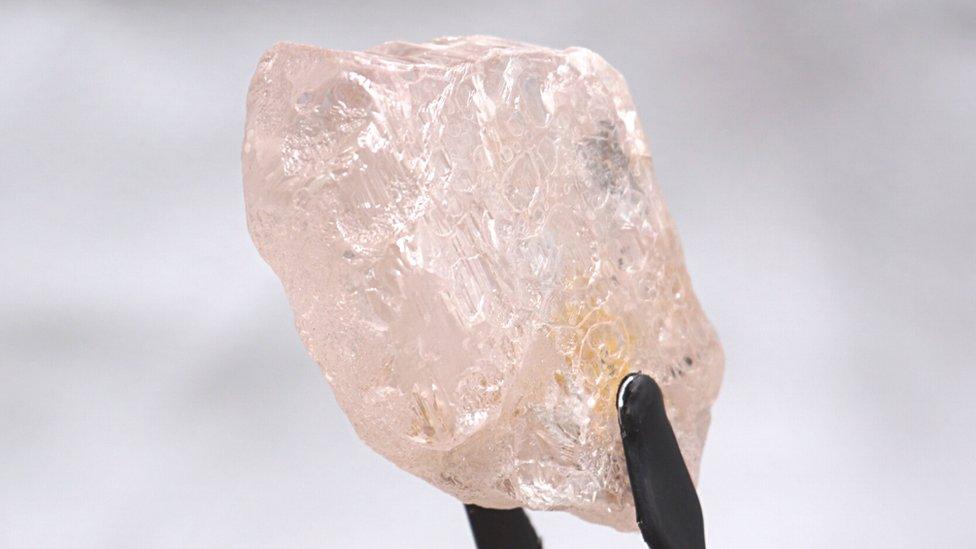'Diamond rain' on icy planets could be more common than first thought!
- Published
- comments
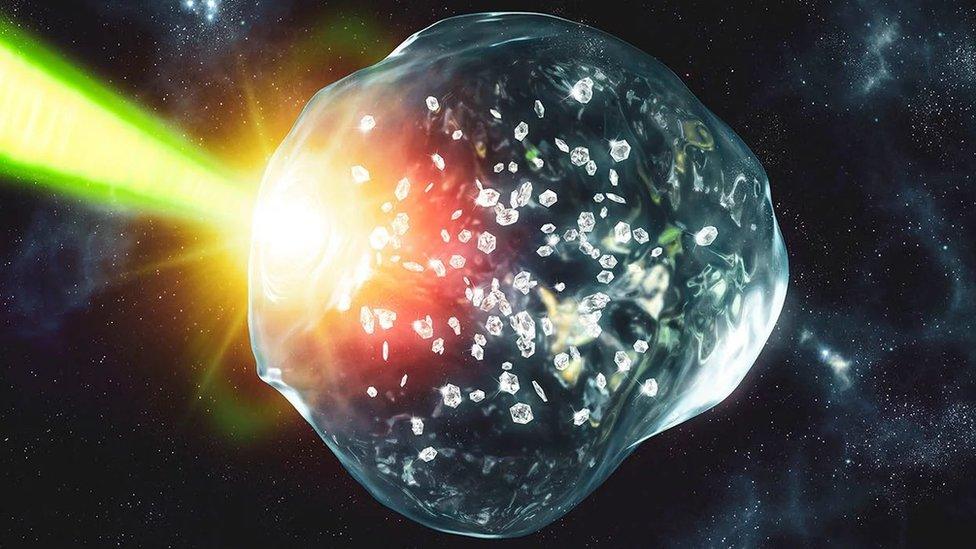
'Diamond rain' on icy planets could be a common occurrence
Have you ever heard of 'diamond rain'? It's a phenomenon believed to be taking place in space.
Scientists have previously looked into what it is, but new research suggests it could be more common than once thought.
In the past, researchers have come up with the theory that conditions on the planets turn the chemical elements hydrogen and carbon, found on giant icy planets like Neptune and Uranus, into solid diamonds thousands of kilometres below their surfaces.
Although this has been referred to as 'diamond rain' it's actually quite different from rain on Earth as we know it.
Mysterious planets
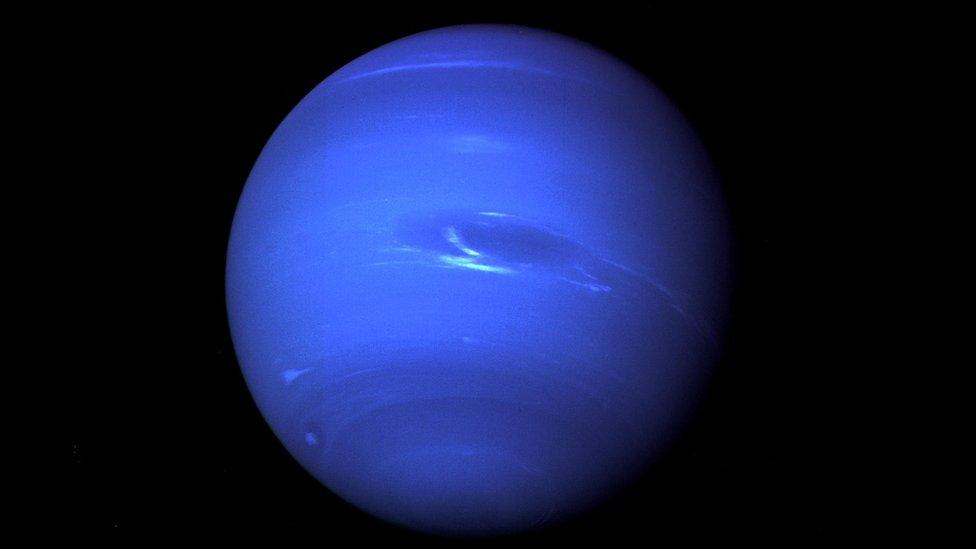
Neptune is known to be an icy planet, but it's believed to contain hot, dense liquid under its surface
At the moment, the existence of diamond rain can't be proven for certain because little is known about Uranus and Neptune, which are the most distant planets in our Solar System.
However, a Nasa group has outlined a potential new mission to the planets, which could launch next decade.
Dominik Kraus, who is a physicist at Germany's HZDR research lab and one of the authors of the new study, explained that under the surface of the cold planets Uranus and Neptune is believed to be a "hot, dense liquid".
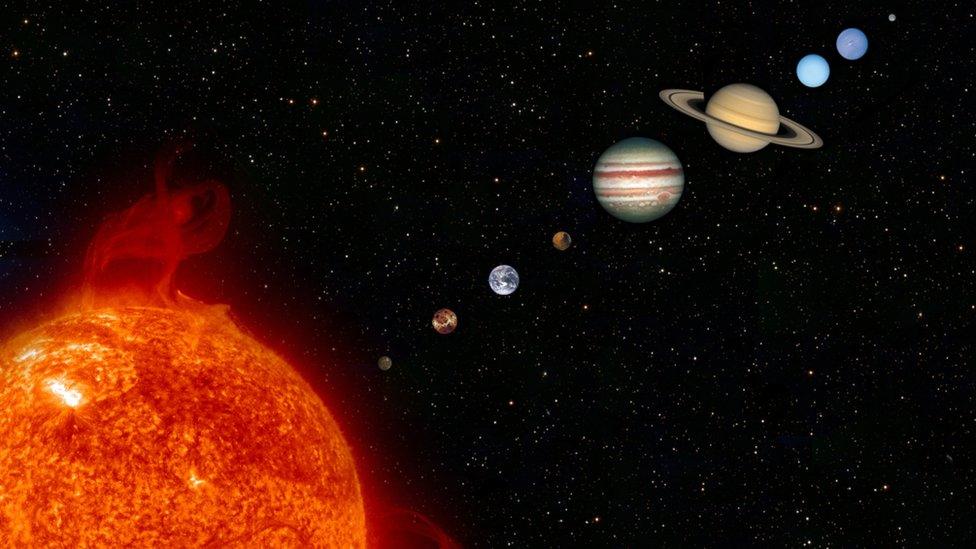
This is where the diamonds form, before they slowly sink down to the rocky cores of the planets more than 10,000 kilometres (6,200 miles) below.
It's thought the fallen diamonds could form huge layers that span "hundreds of kilometres or even more", professor Kraus said.
Diamonds - but not as we know them
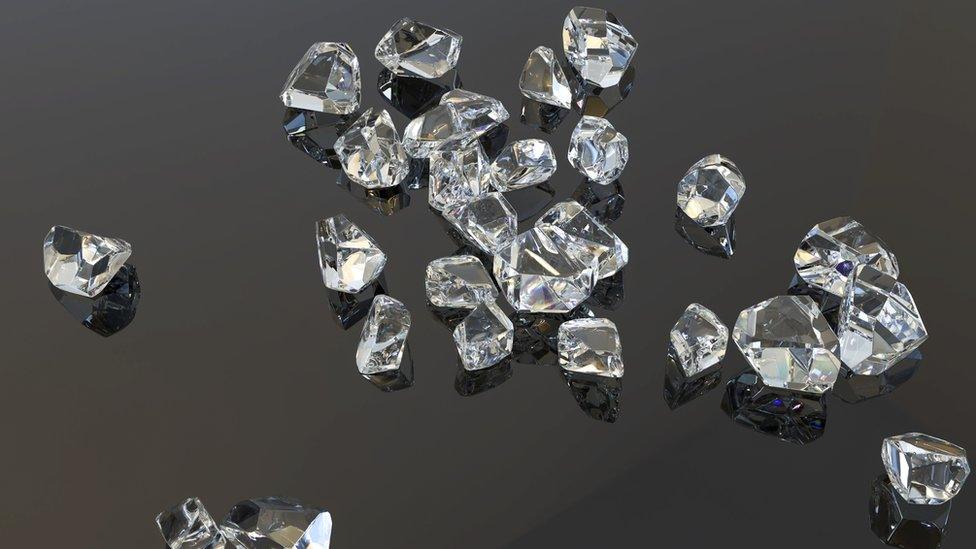
Nano-diamonds are diamonds which are smaller than one micrometre
The scientists also believe this 'diamond rain' could be more common than thought.
It's because planets like Neptune and Uranus, which are known to have really cold temperatures, are thought to be be the most common form of planet outside our solar system, which means the formation of diamonds could be occurring right across the universe!
Although these diamonds might not be shiny like the ones many people are familiar with, professor Kraus said they did come about in a similar way to how diamonds are formed on Earth.
Trials on Earth
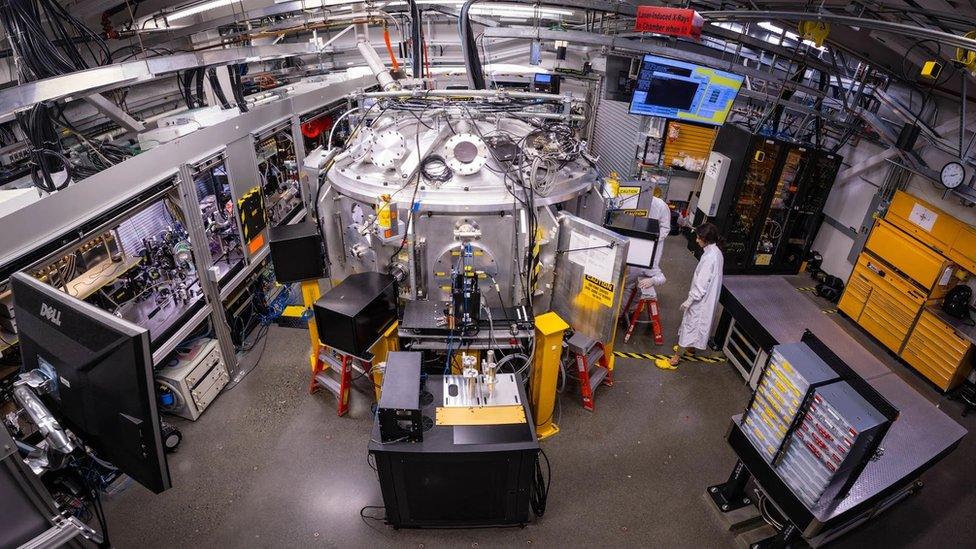
Researchers recreated the extreme conditions found on Neptune and Uranus and observed the formation of diamond rain at the SLAC National Accelerator Laboratory
Previously, scientists have used a plastic material made from a mixture of hydrogen and carbon to recreate the process which they believe happens deep within the planets Uranus and Neptune - which leads to the formation of these diamonds.
However, for their latest research, the scientists added oxygen into the mix to try.
They found the combination of carbon, hydrogen and oxygen they needed already existed in PET plastic, which is used for everyday food packaging and bottles.
The team then used a high-powered laser on the plastic and used short X-ray flashes which allowed them to watch the formation of nano-diamonds, which are tiny diamonds too small to see with the naked eye, professor Kraus said.
Not only has this new study informed researchers about the processes that could be taking place in space, but it also could point towards a new way of making nano-diamonds right here on Earth which are currently used for lots of different purposes.
- Published30 October 2020

- Published18 August 2019
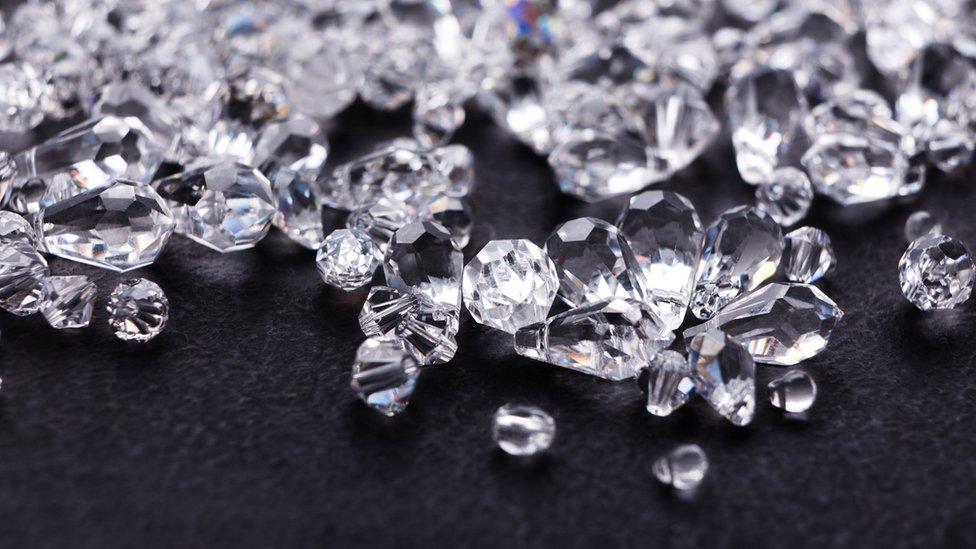
- Published31 July 2022
